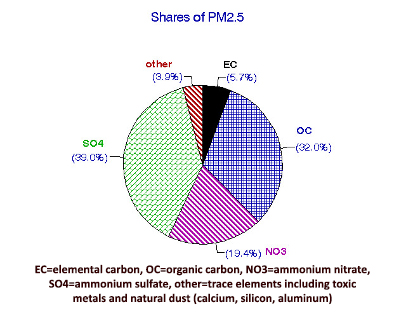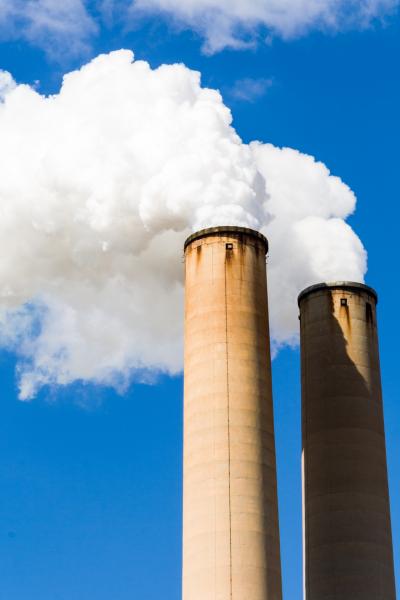- The EPA released its decision to maintain the health-based standard for ambient air concentrations by not reducing the limit from 12 to 11 micrograms per cubic meter (μg/m3).
- The widely-respected journal Nature published a detailed article identifying a specific PM2.5 particle that might have relevant biological consequences.
- A group of six academic scientists published an analysis showing that the drastic reductions in economic activity that resulted from the COVID-19 pandemic did not significantly reduce ambient PM2.5 levels as had been predicted.
The EPA
The first item was not entirely unexpected, nor is it irrational. This overarching issue has been debated for decades: whether long-term health differences correlated with outdoor air quality among cities could be used to establish a correlation between current air quality and subsequent health impacts. This paradigm has never been validated by autopsy or intervention analysis. Nevertheless, the press repeated the claim, based on previous data, that tightening the standard would save 12,000 lives per year.
By contrast, according to 2019 EPA data, only 15 of the 3116 US counties then had PM2.5 levels above 11 μg/m3. If the mean population of those 15 counties were, say, 1 million, they would have suffered about 100,000 deaths annually. Using EPA's risk estimates would place the PM2.5 impact at about 2000 deaths each year, fewer than a single day's recent COVID-19 deaths and a different perspective. Since PM2.5 has been decreasing by about 3% per year, the desired reduction of 1 μg/m3 (10%) could easily be achieved without further regulation.
 However, a more serious and pervasive error in the press is the use of the term "soot," an unpleasant image of soiling, to describe PM2.5, which it is not. Soot is a common term for elemental carbon (EC), a byproduct of incomplete combustion typically produced from poorly maintained furnaces, biomass combustion, and internal combustion engines, notably diesel-fueled. The figure shows typical shares of PM2.5 mass by composition, where EC (soot) is a minor fraction. Almost 60% of PM2.5 comprises water-soluble inorganic ions (NO3, SO4) with no known toxicity at ambient concentration levels. Carbon compounds make up 38%, of which "soot" is only a fraction. The "other" constituents include toxic metals (lead, nickel, vanadium) and particles of natural origin.
However, a more serious and pervasive error in the press is the use of the term "soot," an unpleasant image of soiling, to describe PM2.5, which it is not. Soot is a common term for elemental carbon (EC), a byproduct of incomplete combustion typically produced from poorly maintained furnaces, biomass combustion, and internal combustion engines, notably diesel-fueled. The figure shows typical shares of PM2.5 mass by composition, where EC (soot) is a minor fraction. Almost 60% of PM2.5 comprises water-soluble inorganic ions (NO3, SO4) with no known toxicity at ambient concentration levels. Carbon compounds make up 38%, of which "soot" is only a fraction. The "other" constituents include toxic metals (lead, nickel, vanadium) and particles of natural origin.
By whatever name, soot has had a long history of adverse health effects, including blame for significant air pollution disasters of the mid-20th century. Early air quality was judged by the blackness of sampling filters in major cities in Europe and North America; distinctions between carbonaceous and inorganic particles went unrecognized. Routine monitoring of airborne soot was abandoned with the EPA's advent in 1970, to be replaced by measurements based upon mass – the implicit assumption being that the chemical composition of an airborne particle is irrelevant for regulatory purposes.
The Nature article lays bare the fallacy of this assumption. It discusses newly demonstrated laboratory mechanisms of adverse health effects in terms of particle chemistry and translated those properties to particle emission rates, and described the types of locations involved. It concluded that the largest mass components tend to be the least toxic. By contrast, the most numerous particles, "ultrafines" (UFs), ~1000 times smaller than, say, the largely innocuous sulfate particles, are more likely to enter the bloodstream where cellular reactions may occur. UFs are
- more difficult to measure
-
much more locally distributed
- not monitored routinely in the US.
EPA's initial decision to focus on PM2.5 mass is a clear case of "looking where the light is better rather than where the problem may be." The Nature authors conclude that "acting on the dominant PM sources might not result in the anticipated reductions of the acute health effects of PM," thus supporting the EPA decision to not tighten PM2.5 standard.
COVID-19, economic activity, and air pollution
The 3rd item studied COVID-19 impacts on economic activity and subsequent air pollution based on ambient sampling of PM2.5 and ozone in CA, FL, IL, NY, TX, and WA, using EPA data from about 600 monitors and NO2 data from 3 other cities up to June 12, 2020. The analysis adjusted for temperature effects and previous long-term temporal gradients. Comparisons were made over weekly intervals with the COVID period beginning when "activities were noticeably impacted." The authors concluded
- "There have been only modest and inconsistent changes in concentrations" of PM2.5 and ozone in the post-COVID-19 period.
-
NO2 concentrations were ~30% lower in a "few cities."
This appears to be another case where data availability influenced the choice of outputs to analyze. Ambient PM2.5 and ozone data were available because they were required for regulatory rather than scientific purposes. Reductions in driving and retail business activities would be expected to have decreased local effects on air quality. PM2.5 and ozone are regional pollutants for which ambient concentrations might have decreased far downwind of sources. Neither occurred, and as noted above, EC would have been a much better choice for this intervention experiment.
Since the drastic COVID-related reductions in economic activities did not affect PM2.5, what emissions should be cut to meet stricter ambient standards? The figure above gives the chemical distribution, but the distribution of sources must be considered for an effective abatement policy. There are three classes of PM2.5 sources:
- local (traffic, home heating)
-
regional (formed in the atmosphere at a considerable distance from local sources of gaseous pollutants)
-
natural (dust, biogenic).
All combustion-related emissions were curtailed during the pandemic; for example, electricity demand fell by about 10%. Since emissions dropped but ambient PM2.5 did not, the pandemic intervention experiment provides no assurance that further regulation of combustion sources would be effective. Examination of specific constituents of ambient PM2.5 and their respective sources are required to meet that goal.
We now enjoy clearer skies, partly because of reduced PM2.5 levels, but concomitant long-term health benefits have yet to be realized. The 2019 EPA PM2.5 data show modestly higher levels in Detroit, Cincinnati, Pittsburgh, and Indianapolis than in Philadelphia or New York; thus, population or traffic densities do not appear to matter. Then, what does? It may be time to shine the light on the biologically important PM constituents and do the basic science that has been neglected in the US for decades.



